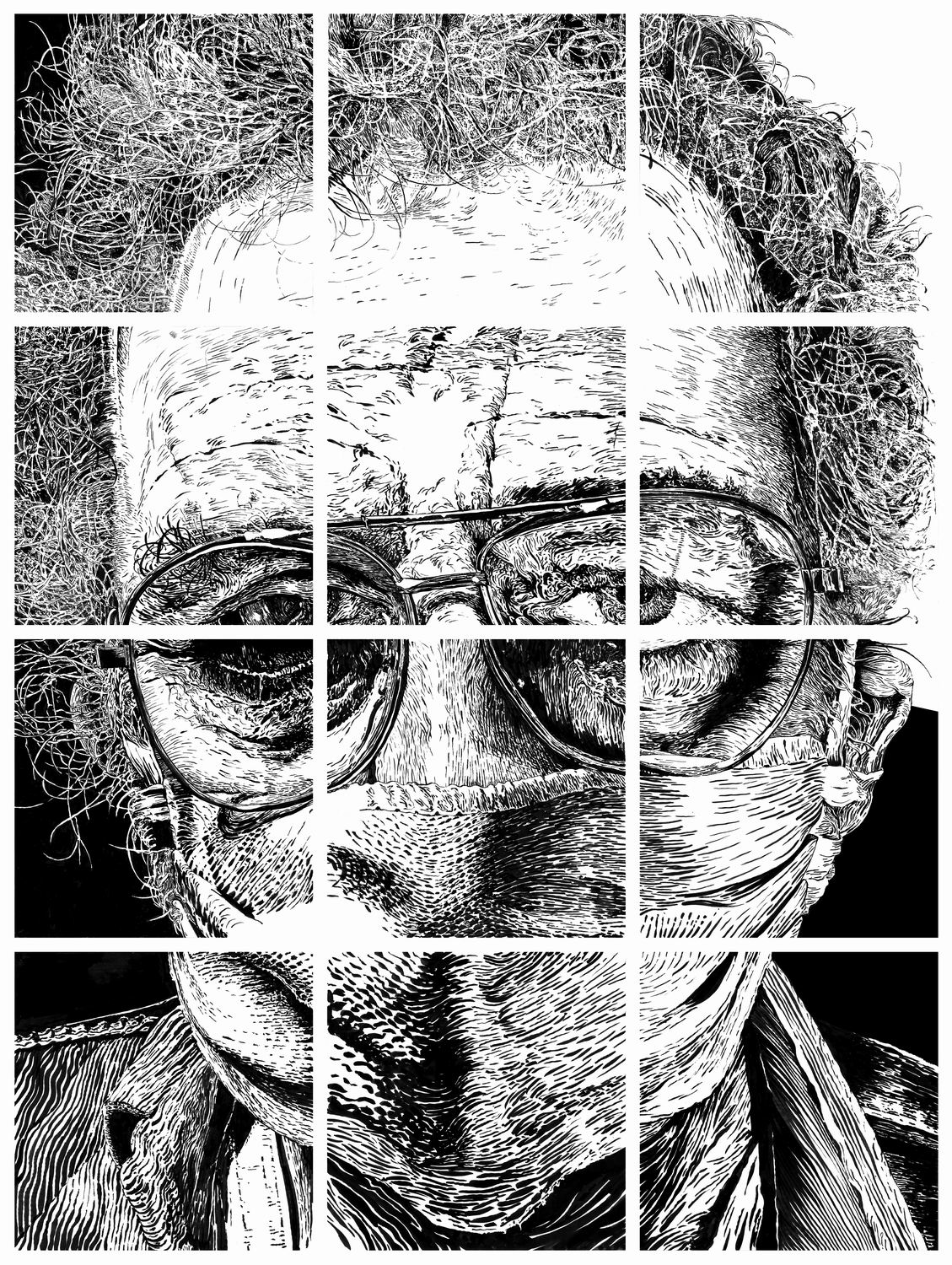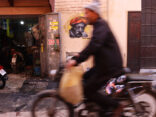Autore
Indice
- Many kinds of vitalism
- The neovitalism of Hans Driesch
- Spemann
- Organicism: a third way between mechanism and neovitalism
↓ download pdf
S&F_n. 25_2021
Abstract
From Hans Driesch’s neovitalism to Hans Spemann’s organicism and beyond
Between the second half of the eighteenth and early Ninteenth century, vitalism was popular e.g. at the medical school of Montpellier, among philosophers like La Mettrie and Diderot and especially among scientists and philosophers of the Naturphilosophie. However, historiography of vitalism has mostly focused on the much more recent neo-vitalist positions of Hans Driesch. Initially close to Wilhelm Roux’s mechanistic views, Driesch stumbled across experimental results that did not appear explainable in terms of developmental mechanics; he therefore invoked an immaterial causal principle (entelechy) from which, however, he was not able to deduce general laws or an experimental design – reasons why his reading of the living has been widely rejected. However, even if vitalism in a metaphysical sense is a dead issue, the complex behavior of living beings is not necessarily resolved into chemical and physical processes. Hans Spemann identified a group of cells that perform as the organizing center of the developing embryo: although mediated by morphogenetic molecules or by physical forces, this behavior suggests that living systems can be adequately described only approaching them as integrated wholes. This approach characterizes organicism, a ‘third way’ shown by Gilbert and Sarkar to be the metaphysics perspective best consistent with embryology.
Keywords: vitalism; organicism; Hans Driesch; Hans Spemann
- Many kinds of vitalism
Within the life sciences, vitalistic positions have been expressed at different times and with different metaphysical or epistemological implications. It is therefore legitimate to distinguish between a methodological vitalism and a metaphysical vitalism.
An early example of metaphysical vitalism is the materialistic vitalism of Julien Offray de La Mettrie (1709-1751) and Denis Diderot (1713-1784), in which a materialistic metaphysics is accompanied by the recognition of the existence, in living beings, of emergent properties not deducible from the sole properties of the matter of which they are formed. Approximately contemporary is the vitalism of the Montpellier medical school. Its main representatives are Théophile de Bordeu (1722-1776) and Paul-Joseph Barthez (1734-1806). Barthez advocated a “vital principle” responsible for the phenomena of life, but he did not commit himself to either a spiritualistic or a materialistic view. He argued that «It is useless to investigate whether this Life Principle is a substance, given the obscurity of this term. It is possible that the Vital Principle does not have a separate existence from the body it vivifies»[1]. It is therefore sensible to describe this as a functional vitalism or epistemological vitalism, that promises to explain “vital” properties better than fully mechanistic models can[2].
From these first examples it is clear that the contrast between materialism and vitalism does not necessarily coincide with the contrast between mechanism and non-mechanism, as will be the case of the contrast between Wilhelm Roux’s mechanistic materialism and Hans Driesch’s non-mechanistic vitalism, which we will deal with later, but the eighteenth century philosophy includes both the mechanistic vitalism of Diderot and La Mettrie and the non-materialistic mechanism of Leibniz: in the latter’s words, «in nature everything happens mechanically, but the principles of the mechanism are metaphysical»[3].
At the time a science of the living was taking shape in the German-speaking countries with the joint contributions of medicine, natural history and philosophy[4], vital forces pervade most interpretations of life’s phenomena, witnesses e.g. the works of Friedrich Schelling (1775-1854) and Gottfried Reinhold Treviranus (1776-1837)[5]. A chapter De viribus vitalibus in universum features even in Johann Friedrich Blumenbach’s (1752-1840) Institutiones Physiologicae[6]. To contrast it with the neovitalistic views, including his own, formulated towards the end of the nineteenth century, Hans Driesch called dogmatic the vitalism of philosophers and scientists of the Naturphilosophie:
With Treviranus ... begins that dogmatic vitalism of which it is no longer considered necessary to discuss the foundation ... and also what can be called ‘textbook vitalism’: every comprehensive treatment on the subject of physiology now begins, so to speak, with a vitalistic system, which mostly does not differ from the one that preceded it. In all textbook of vitalists the problems of morphogenesis that in the 17th century were always at the center of interest are clearly kept in the shadow[7].
- The neovitalism of Hans Driesch
The German embryologist Hans Driesch (1867-1941) is the most eminent exponent of a view of life phenomena for which Emil duBois-Reymond (1818-1896) introduced the term neovitalism[8].
Initially close to the mechanistic positions of Wilhelm Roux (1850-1924) (he will continue to publish in Archiv für Entwickelungsmechanik, the journal founded by the latter, even after passing to vitalism), Driesch stumbled onto experimental results that he thought he could not explain in terms of development mechanics.
A contrast between two interpretations of the living and, in particular, of developmental processes, emerged soon in the works of Wilhelm Roux and Hans Driesch, based on the apparently opposite experimental results obtained by the two scholars. For Roux, the living organism is a system of organs, made up in turn of cells, and the latter of molecules, and all these hierarchically structured elements are involved in the dynamics of development, both in normal and in pathological conditions, like parts in any other physical system[9]. To obtain a satisfactory description of an organism’s development, it is sufficient to rely on its development kinetics, the derivation of the future movements of all the particles involved in development from the reciprocal positional relations of all parts of the egg at the time development begins[10].
Roux’s experiments on the development of the frog starting from an embryo in which, after the first division from the egg, one of the two cells was killed consolidated his confidence in his program of development mechanics[11]: the surviving blastomere gives rise to only one half of the body it would have produced under normal conditions[12].
However, a similar mosaic of development potential distributed among the embryo cells from the earliest stages does not result from Driesch’s experiments on the sea urchin[13]. Favoured by the ease with which the embryo of this animal can be mechanically dissociated, Driesch separated the individual blastomeres after the first, second or third cell division, starting from the fertilized egg, and in all circumstances he obtained from a single blastomere a complete larva, albeit smaller, because at the stage of two, four or eight blastomeres the entire volume of the egg has been partitioned between them, in this phase in which the embryo does not take nourishment from outside. Driesch thus discovered a regulatory capacity of the sea urchin embryo, contrasting with the mosaic behavior of the frog embryo.
Unable to explain these results, and similar results from experiments on different animals in terms of the simple mechanics upon which Roux called, Driesch embraced vitalism. He abandoned soon all experimental activity and devoted himself more and more exclusively to philosophy. The divergent intellectual and academic path of Roux and Driesch will culminate in the fate of their autobiographies. Roux’s pages will find their place in a prestigious series dedicated to the most eminent figures in the medicine of the time[14], while Driesch’s ones will be included in a parallel series dedicated to the German philosophy of the same period[15].
Despite their divergent intellectual paths, Driesch continued to acknowledge his intellectual debt to Roux:
What made it possible to give suitable foundation to the vitalistic doctrine was the awakening of experimental morphological research, of Wilhelm Roux’s “mechanics of development”: in effect, all the new effective arguments in favor of the doctrine of the autonomy of vital phenomena… are derived from this area of research[16].
However, «the new vitalism… arose essentially as a result of the reawakened physiology [of development]»[17]. More precisely, «the genesis of form is the specific ground on which vitalism grows, only from the latter does it suck its strength, at least to the extent that it does not include the so-called ‘spiritual’ as its object»[18].
Driesch ended up postulating the existence in the living of an immaterial, non-localized organizing principle, to which he gave the name of entelechy[19]:
According to the current state of knowledge, entelechy is always linked to bodies, however I do not think it is a simple property of material reality. Where it has its “seat” inside material bodies is an idle question. Instead, it is important to consider that with a division of the bodies associated with it – for example, in the formation of the egg, in budding or in the case of artificial splitting – it is also divided between the parts, remaining however “whole”[20].
Driesch assigned the entelechy a role as regulator of the various potentialities resident in the material system[21].
It has been argued[22] that for some early twentieth-century biologists and philosophers the doctrine of the entelechy was not a metaphysical heresy but a legitimate response to the inadequacy of mechanistic explanations. Eventually, Driesch’s vitalism was rejected for its failure to achieve scientific status because the entelechy hypothesis did not evolve into the formulation of universal laws of the living matter, and also because no convincing example of indeterminism (different states ensuing out of the very same condition), was ever reported from experiments either by Driesch himself, or by others.
- Spemann
Vitalism in the metaphysical sense is a dead issue but, on the epistemological level, the irreducibility of complex systems to the mechanism of simple physical systems remains: this invites embracing organicism, a third way besides vitalism and mechanism.
A very important turning point in the history of experimental embryology was due to Hans Spemann (1869-1941) and his collaborators and students. Their experiments helped dissolve the mists of entelechy and put the role of cellular phenomena in developmental processes on a more solid basis, but (re)opened questions about other notions. For example, what is a biological individual? Spemann demonstrated that strangling with a hair a fertilized newt egg can lead to the formation of two complete embryos[23].
Based on other experiments on newt embryos[24] Spemann identified the cells forming the dorsal lip of the blastopore (the embryo’s primitive mouth at the gastrula stage), as the organizer, i.e. as the organizing centre of the developing embryo. These inducing and organizing capacities disappear as soon as these cells are destroyed, either mechanically or with a devitalizing hot or cold treatment[25]. This seemed to indicate that the living structure as such, rather than some chemical substance, is responsible for the induction[26].
- Organicism: a third way between mechanism and neovitalism
In the controversy between mechanism and neovitalism, Spemann’s position seems distinctly to turn towards organicism. On the ontological level, this philosophy is frankly materialistic; however, it recognizes the existence of complex systems where the simple sum of the properties of the parts does not explain the properties of the whole: the properties of the parts depend on the context and their interactions lead to the appearance of emerging properties in the resulting system. In remarking this behavior, Spemann’s organicism is opposed to the reductionism that accompanies the materialistic philosophy applicable to other sciences, such as physics. Reductionism, however, ca not be the epistemology of developmental biology[27]. In Spemann’s words:
I have repeatedly used expressions that denote not physical but psychological analogies. It is not a simple poetic image. [..] These developmental processes, like all life processes, may or may not be resolved into chemical and physical processes, in the nature of their connections with everything we know they bear no closer resemblance than with those vital processes of which we have the most intimate knowledge, ie the psychic ones. It should mean that, beyond all philosophical implications, precisely in the interest of advancing our concrete knowledge which must be based on exact foundations, we should not let this advantage that derives from our position between the two worlds slip away. […] On the way to the new high milestone, I believe I have taken a step forward with my experiments[28].
Positions close to organicism can be read also in the works of other scholars who have given important contributions between the end of the nineteenth century and the first half of the twentieth century, such as Oskar Hertwig (1849-1922), Albert M. Dalcq (1893-1973), Ross G. Harrison (1970-1959), Conrad Hal Waddington (1905-1975) and Joseph T.M. Needham (1900-1975). Gilbert and Sarkar even claim that organicism has traditionally been the philosophy of the embryologist[29]. In their recent revisitation of the issue, these authors have defended organicism as the best ontology for developmental biology. However, its scope is, reasonably, much wider, as suggested by the words that close the last work of the great physiologist Claude Bernard (1813-1878):
Having reached the end of our studies, we see that they impose a completely general conclusion, the fruit of experience, that is, between the two schools that make vital phenomena something absolutely distinct from chemical-physical phenomena or, on the contrary, something absolutely identical to these, there is room for a third doctrine, that of physical vitalism, which takes into account what is special in the manifestations of life and what is in them that is consistent with the action of general forces: the ultimate element of the phenomenon is physical, its arrangement is vital[30].
Written half a century before William Emerson Ritter (1856-1944) proposed for this philosophy the name of organicism[31] and almost twenty years before between Roux and Driesch arose the contrast between a cellular and molecular mechanism and a neovitalism that revolved around the notion of entelechy, Bernard’s words seem rather to anticipate the biology of our days, which reads life processes as flows not only of matter and energy, but also of information[32].
The extraordinary developments made in recent decades by developmental genetics and by the studies of the molecular mechanisms by which cells and tissues interact have left no chance to a return of vitalism, but are bringing the organism, with its emerging properties, back to the center of attention[33]. Time has come to take its development seriously[34].
[1] P.-J. Barthez, Nouveaux éléments de la science de l’homme, J. Martel aîné, Montpellier 1778. All translations from French or German in this article are mine.
[2] C.T. Wolfe, From substantival to functional vitalism and beyond: Animas, organisms and attitudes, in «Eidos», XIV, 2011, pp. 212-235; B. Chen, A non-metaphysical evaluation of vitalism in the early twentieth century, in «History and philosophy of the life sciences», XL, 50, 2018. See also C. Bognon-Küss, B. Chen, C.T. Wolfe, Metaphysics, function and the engineering of life: The problem of vitalism, in «Kairos. Journal of Philosophy & Science», XX, 2018, pp. 113-140.
[3] G.W. Leibniz, Antibarbarus physicus pro philosophia reali contra renovationes qualitatum scholasticarum et intelligentiarum chimaericarum, in Die philosophischen Schriften von Gottfried Wilhelm Leibniz herausgegeben von C. J. Gerhardt. Siebenter Band. Weidmannsche Buchhandlung, Berlin 1890, pp. 337-344.
[4] J.H. Zammito, The gestation of German biology. Philosophy and physiology from Stahl to Schelling, Chicago University Press, Chicago - London 2018.
[5] F.W.J. Schelling, Erster Entwurf eines Systems der Naturphilosophie, Gabler, Jena und Leipzig, 1799; G.R. Treviranus, Biologie oder Philosophie der lebenden Natur für Naturforscher und Aertzte, Erster Band, Röwer, Göttingen 1802.
[6] J.F. Blumenbach, Institutiones physiologicae, Dieterich, Gottingae 1787.
[7] H. Driesch, Der Vitalismus als Geschichte und als Lehre, J.A. Barth, Leipzig 1905.
[8] E. du Bois-Reymond, Über Neo-Vitalismus, in «Sitzungsberichte der königlich Preussischen Akademie der Wissenschaften zu Berlin», XXXII, 2, 1894, pp. 623-641.
[9] W. Roux, Der Kampf der Theile im Organismus, Engelmann, Leipzig 1881.
[10] Id., Programm und Forschungsmethoden der Entwickelungsmechanik der Organismen, Engelmann, Leipzig 1897.
[11] Ibid.
[12] W. Roux, Über die künstliche Hervorbringung halber Embryonen durch Zerstörung einer der beiden ersten Furchungskugeln sowie über die Nachentwicklung (Postgeneration) der fehlenden Körperhälfte, in «Virchow’s Archiv für pathologische Anatomie und Physiologie», CXIV, 2, 1888, pp. 246-266.
[13] H. Driesch, Die isolirten Blastomeren des Echinidenkeimes, in «Archiv für Entwickelungsmechanik der Organismen», X, 2-3, 1900, pp. 361-410.
[14] L.R. Grote (ed.) Die Medizin der Gegenwart in Selbsdarstellungen, Felix Wiener, Leipzig 1923.
[15] R. Schmidt (ed.) Die Deutsche Philosophie der Gegenwart in Selbstdarstellungen, Felix Wiener, Leipzig 1921.
[16] H. Driesch, Der Vitalismus, cit.
[17] Ibid.
[18] Ibid.
[19] K. Sander, Entelechy and the ontogenetic machine - Work and views of Hans Driesch from 1895 to 1910, in «Roux’s Archives of Developmental Biology», CCII, 2, 1993, pp. 67-69.
[20] H. Driesch, Der Vitalismus als Geschichte und als Lehre, cit.
[21] H. Hein, The endurance of the mechanism–vitalism controversy, in «Journal of the History of Biology», V, 1, 1972, pp. 159-188.
[22] B. Chen, A non-metaphysical evaluation of vitalism in the early twentieth century, cit.
[23] H. Spemann, Experimentelle Forschungen zum Determinations- und Individualitätsproblem, in «Naturwissenschaften», VII, 32, 1919, pp. 581-591.
[24] H. Spemann, H. Mangold, Über die Induktion von Embryonalanlagen durch Implantation artfremder Organisatoren, in «W. Roux’ Archiv für Entwicklungsmechanik der Organismen und mikroskopische Anatomie», C, 3-4, 1924, pp. 599-638; W. Krämer, Über Regulations- und Induktionsleistungen destruierter Induktoren, in «Wilhelm Roux’ Archiv für Entwicklungsmechanik der Organismen», CXXXI, 2, 1934, pp. 220-237.
[25] J.F. Holtfreter, Reminiscences on the life and work of Johannes Holtfreter. In A conceptual history of modern embryology, ed. S.F. Gilbert, Plenum, New York and London 1991, pp. 109-127.
[26] Ibid.
[27] S.F. Gilbert, S. Sarkar, Embracing complexity: Organicism for the 21st century, in «Developmental Dynamics», CCXIX, 1, 2000, pp. 1-9.
[28] H. Spemann, Experimentelle Beiträge zu einer Theorie der Entwicklung, Julius Springer, Berlin 1936, p. 278.
[29] S.F. Gilbert, S. Sarkar, Embracing complexity, cit.
[30] C. Bernard, Leçons sur les phénomènes de la vie, communs aux animaux et aux végétaux, Baillière, Paris 1878-1879.
[31] W.E. Ritter, The unity of the organism, or, the organismal conception of life, vols. 1-2, Gorham, Boston 1919.
[32] P. Omodeo, Characteristics of living beings, in Biological sciences fundamentals and systematics, a cura di A. Minelli, G. Contrafatto, EOLSS Publishers, Oxford 2009, vol. 1, pp. 84-106.
[33] P. Bateson, The return of the whole organism, in «Journal of Biosciences», XXX, 1, 2005, pp. 31-39. D.J. Nicholson, The return of the organism as a fundamental explanatory concept in biology, in «Philosophy Compass», IX, 5, 2014, pp. 347-359.
[34] J.S. Robert, Embryology, epigenesis, and evolution: Taking development seriously, Cambridge University Press, Cambridge 2004.








